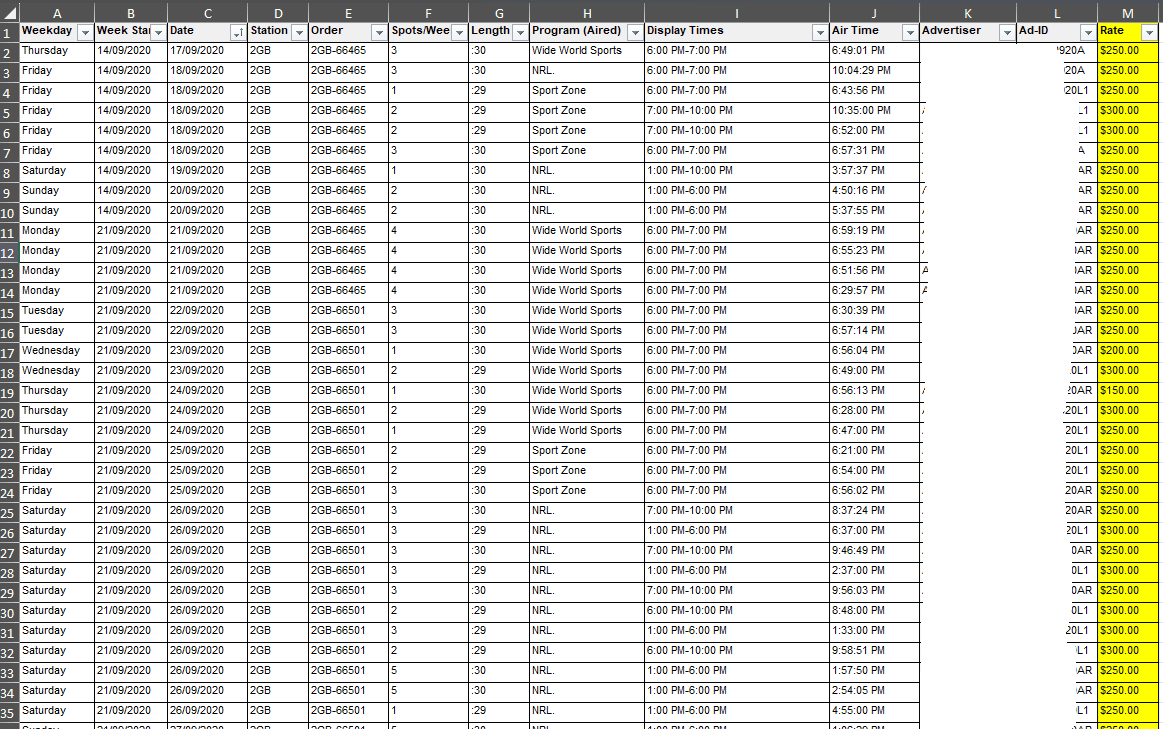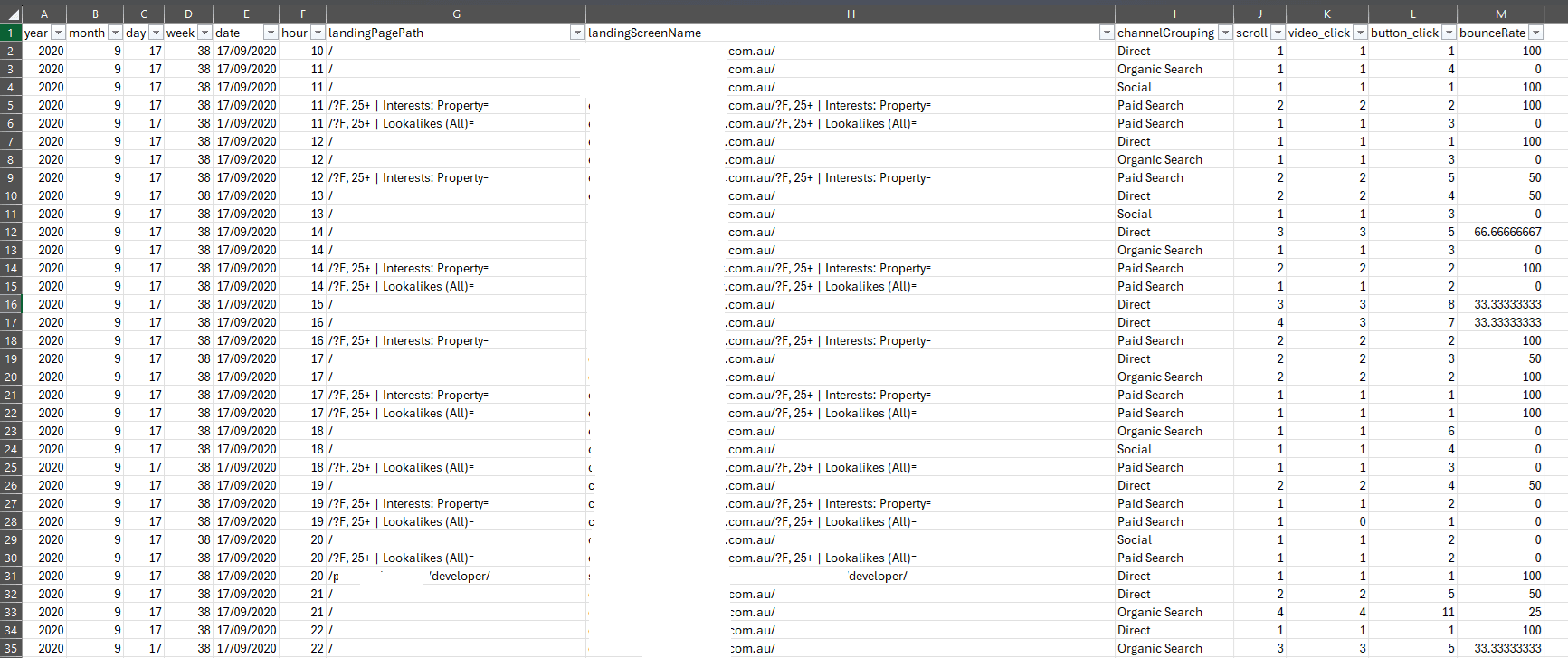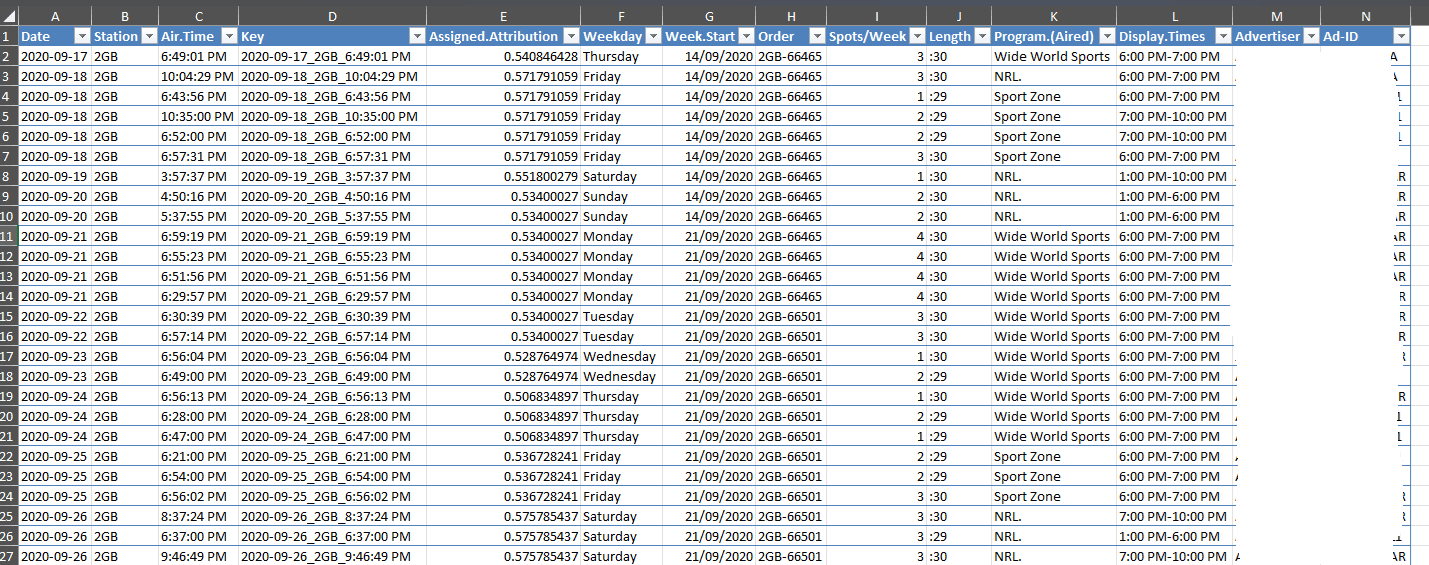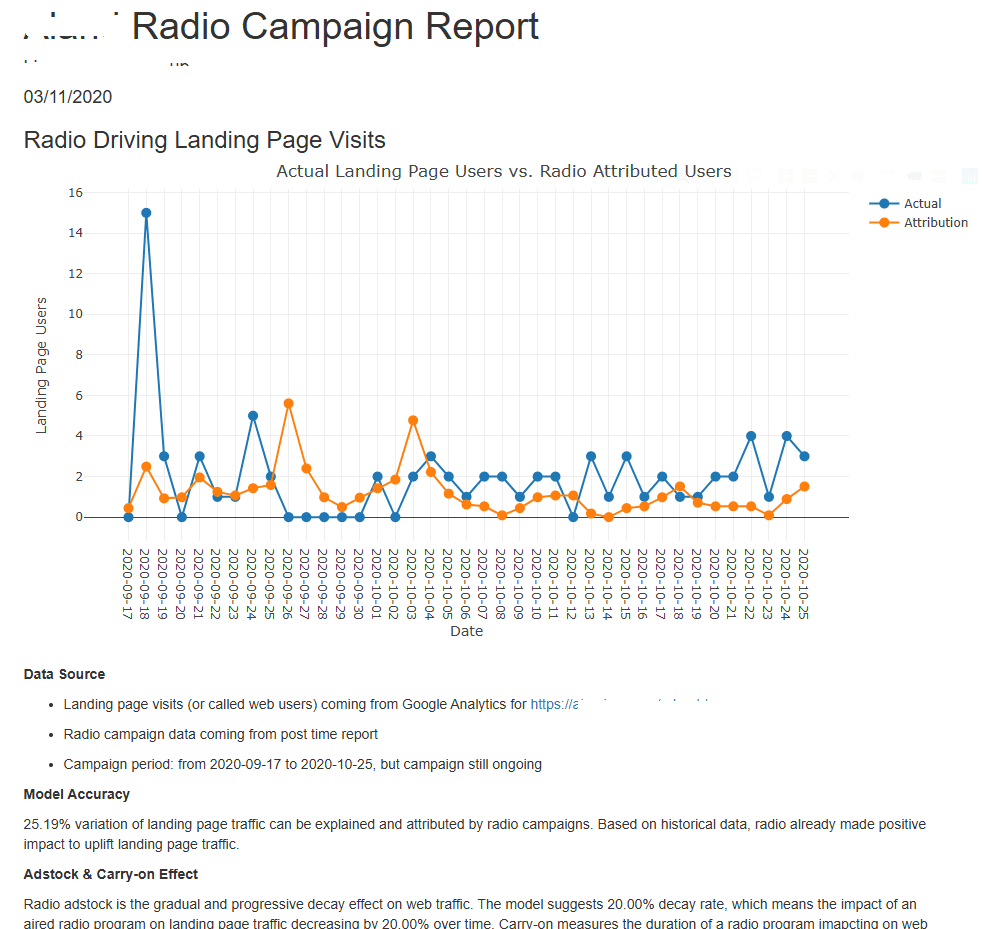From Radio Waves to Landing Pages: Measuring 2GB Radio Ads with Google Analytics for a Sydney Apartment Launch
Introduction
When a regional but reputable property developer and its trusted builder completed a premium apartment project in inner Sydney, the stakes were high. This was not just another project—it was positioned as a flagship development targeting both first home buyers and savvy property investors looking for a negatively geared asset in Sydney’s competitive housing market. The challenge? To generate quality leads and prove the effectiveness of a high-cost radio advertising campaign on 2GB radio in driving traffic to the project’s landing page and official website.
This blog will walk you through how More Than Data applied Google Analytics, advanced attribution modelling, and robust media measurement frameworks to track, analyse, and uncover the real impact of radio ads on digital traffic. It also reveals why transparency and data-based evidence matter when assessing media agency performance.

The Landing Page Strategy
To capture leads, the property developer created a dedicated landing page attached to its corporate website. This page showcased the apartment project with:
- A 3D video demo of the apartments
- A detailed project overview (location, pricing, lifestyle appeal)
- An Expression of Interest (EOI) form, where visitors could provide their name, phone number, and email
- A clear submission button to track intent-to-purchase
The landing page was designed not only for information but also as a conversion funnel to qualify leads from both online and offline channels.
Radio Advertising on 2GB
The property developer decided to partner with its media agency to run multiple radio ads on 2GB radio station. With 2GB’s strong listener base in Greater Sydney, the goal was to reach a broad audience of potential property buyers and investors. The campaign, costing around $20,000 (excluding creative production), aimed to:
- Raise awareness of the apartment project
- Drive listeners to visit the website and landing page
- Generate submissions of the EOI form
But the key question remained: Did the radio ads actually drive landing page visits? This is where More Than Data stepped in.

Setting Up Tracking with Google Analytics
Before launching the radio ads, More Than Data implemented Google Analytics event tracking on the landing page. This enabled granular measurement of visitor behaviour. Key tracked events included:
- Scroll: Did visitors engage with the content?
- Video clicks: How many played the 3D demo?
- Form interactions: Did visitors start filling out the EOI form?
- Form submissions: How many completed the EOI process?
With proper tags and triggers, the foundation for attributing website performance to media channels was in place.
Connecting Radio Ads to Website Traffic
Post-campaign, More Than Data integrated two critical data sources:
- 2GB radio ad logs – including times, slots, campaign frequency and rates
- Google Analytics website traffic data – segmented by time and event-level interactions
By combining these datasets, More Than Data could simulate how radio ads influenced web visits and conversions.

Attribution Modelling and Adstock Transformation
The methodology involved more than simple correlation. More Than Data applied:
- Adstock Transformation: To simulate the carry-over and time-decay effect of radio ads. Listeners don’t always act instantly after hearing an ad; some may visit hours or even days later
- Attribution Modelling: To quantify the contribution of radio ads versus other channels (paid search, social, referral)
This provided a more realistic measure of how much incremental traffic was driven by radio.
Challenges Addressed by More Than Data
Several technical and operational hurdles had to be overcome:
- Processing 2GB Post-Campaign Data: Cleaning and aligning broadcast logs with website analytics
- Landing Page Analytics: Extracting event-level insights from Google Analytics
- Applying Adstock Transformation: Capturing delayed audience response
- Attribution Framework: Separating radio-driven visits from organic or coincidental traffic
- Measuring Impact: Quantifying the true incremental effect of radio on landing page visits
- Automating Reporting: Delivering results via an interactive HTML report that the developer could explore


Findings: Radio’s Real Impact
The results surprised the property developer:
- Radio ads on 2GB did not significantly drive landing page traffic
- Most visits came from organic search and direct traffic
- EOI form submissions were far below expectations
In other words, the $20,000 radio spend almost failed to deliver measurable ROI in terms of digital conversions.
Why the Audit Was Necessary
The property developer had relied on its media agency for ATL campaigns, including OOH, TV, and Radio. However, doubts emerged about the agency’s performance. By involving More Than Data, the developer sought:
- Independent verification of media impact
- Transparency into whether agency recommendations aligned with real outcomes
- Data-driven evidence before renewing its annual account service contract
The findings validated the developer’s scepticism: the media agency had oversold radio’s role in driving digital engagement.

Lessons for Property Developers and Builders
This case highlights several broader lessons:
1. Don’t Assume Offline Media Drives Online Traffic
Not all radio ads translate to website visits. Tracking and attribution are essential.
2. Data Transparency Matters
Developers should demand accountability from media agencies. Inflated claims without measurement erode trust.
3. Google Analytics Is Essential
Proper tagging and tracking unlock online behavioral insights that go beyond vanity metrics.
4. Attribution Modelling Prevents Misallocation of Budgets
Advanced techniques like adstock transformation to simulate ads carry-over and time-decay effect prevent wasted spend on channels with minimal impact.
5. Independent Audits Protect Investment
Third-party verification ensures agencies are held accountable for campaign outcomes.

Conclusion
The launch of a premium apartment project in inner Sydney provided a perfect case study in the power of data-driven marketing measurement. While 2GB radio advertising offered wide audience reach, its true impact on landing page traffic and website conversions was minimal. Through careful Google Analytics setup, attribution modelling, and transparent reporting, More Than Data helped the property developer uncover the truth and make informed decisions about future media investments.
In an industry where every dollar counts, and where property developers and builders must balance high-stake investments with measurable returns, one lesson stands clear: evidence beats assumptions. Media agencies must be transparent, and property developers must demand proof. That’s the only way to turn marketing from guesswork into science.
